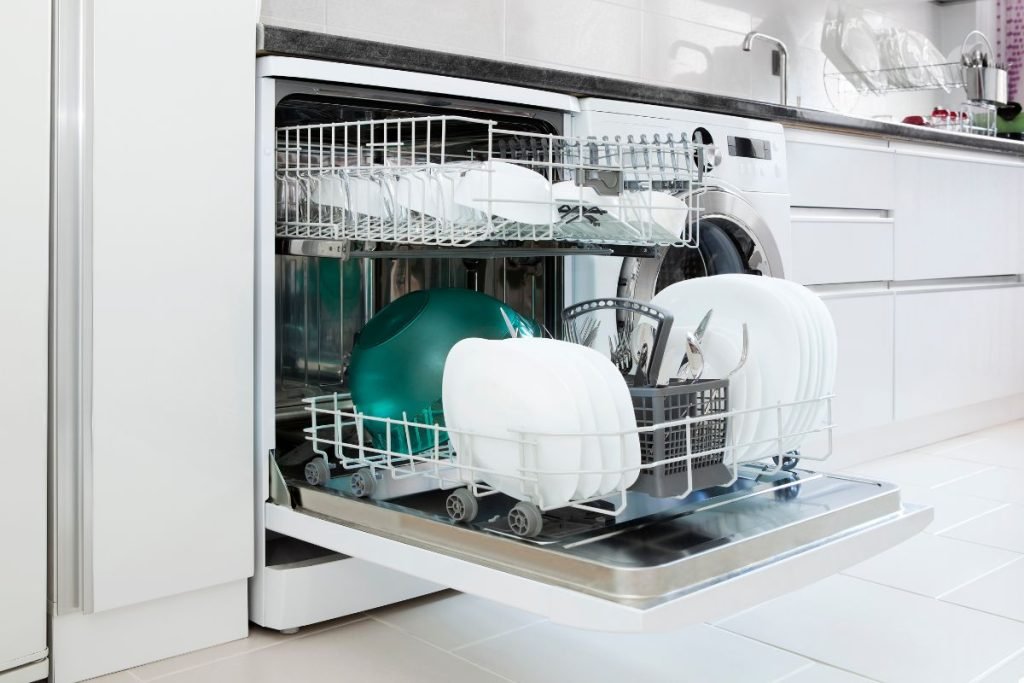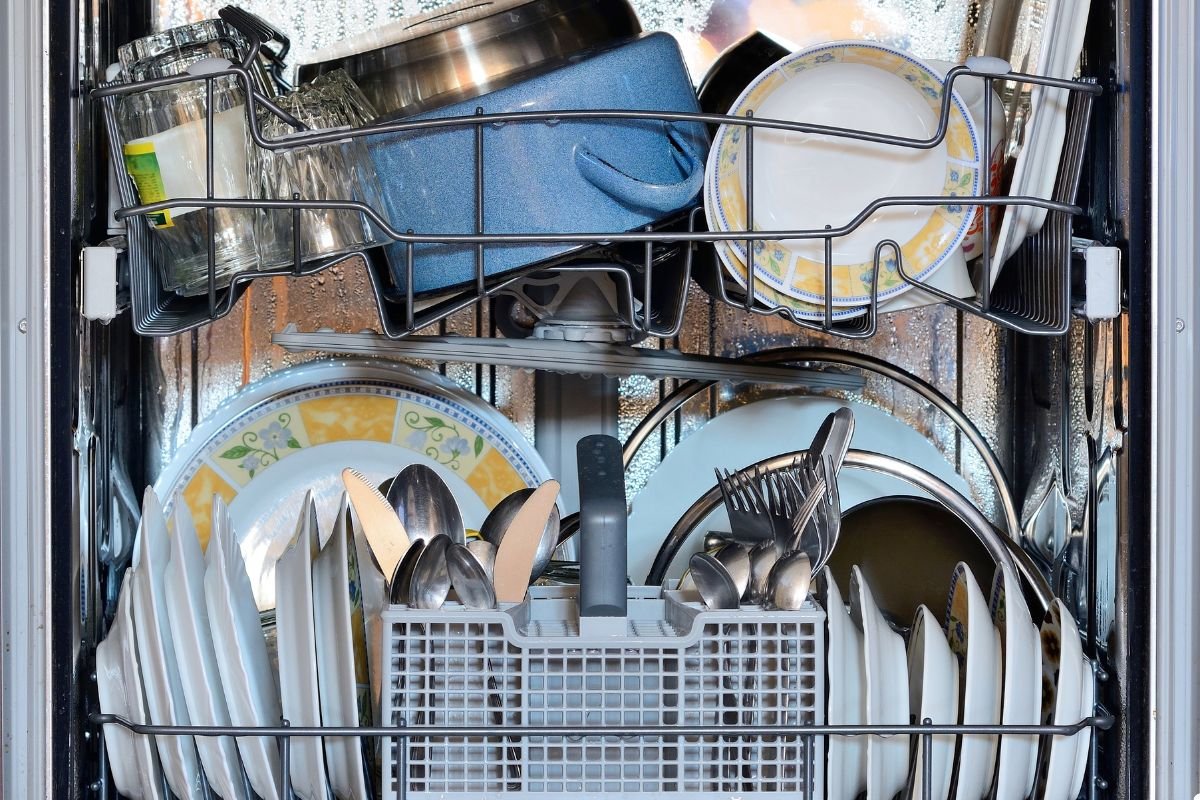
Dishwashers are a lifesaver when it comes to saving time and effort in the kitchen. But are you getting the most out of yours? From loading techniques to maintenance tips, there’s a lot you can do to make sure your dishwasher works like a charm. Our team in Tampa has put together these practical tips to help you keep your dishwasher running smoothly and efficiently. If you need assistance or have any questions, don’t hesitate to call us—we’re here to help!
Key Takeaways
- Load your dishwasher properly to get the best results and avoid damage.
- Pick the right detergent and use it in the right amount to keep things clean.
- Give your dishwasher regular maintenance to avoid breakdowns.
- Save energy by using eco-friendly settings and running full loads.
- Know how to troubleshoot common problems like odors or water pooling.
How to Load Your Dishwasher for Maximum Efficiency
Arranging Plates and Bowls Correctly
Getting your plates and bowls in the right spots is half the battle. Plates should always go in the bottom rack, standing upright and slightly angled toward the center. This allows water and detergent to hit them directly. Bowls, on the other hand, should be placed at an angle to prevent water from pooling inside. If you’re unsure, check your dishwasher’s manual for a visual guide—it’s usually pretty straightforward. When your dishwasher is not performing as expected, our kitchen appliance repair services provide quick solutions to keep your kitchen running smoothly.
A well-organized dishwasher not only cleans better but also saves you time and energy in the long run.
Positioning Glassware to Prevent Breakage
The top rack is where your glassware belongs. Make sure to place glasses and cups between the tines, not over them. This keeps them stable during the wash cycle and reduces the risk of cracks or chips. If you’ve got wine glasses, look for slots or holders designed specifically for their stems. And remember, overloading the top rack can lead to clinking and breakage, so leave a little breathing room.
Best Practices for Silverware Placement
When it comes to silverware, variety is key. Mix forks, knives, and spoons so they don’t nest together and block water flow. Some dishwashers have a dedicated silverware basket—use it! Place knives with the blades down for safety, while forks and spoons can go either way. For even better results, consider alternating their directions to ensure thorough cleaning. Properly loading a dishwasher ensures your utensils come out spotless every time.

Choosing the Right Detergent for Your Dishwasher
Understanding Different Detergent Types
Picking the right dishwasher detergent might seem like a small decision, but it can make a big difference in how clean your dishes come out. There are three main types to choose from: powders, gels, and pods (or tablets). Powders are usually the most cost-effective, but they can be tricky to measure. Gels dissolve quickly, making them great for shorter cycles, but they might not pack as much cleaning power. Pods, on the other hand, are super convenient and pre-measured, but they can be pricier than other options. Think about your dishwasher’s settings and your typical load size when deciding which type works best for you.
How Much Detergent to Use
Using too much detergent can leave a soapy residue, while too little might not get your dishes clean. A good rule of thumb is to follow the manufacturer’s instructions on the detergent packaging. Most modern dishwashers are designed to work with less detergent than you might think. If you’re using a pod, you’re all set—it’s already measured out. For powders or gels, use the marked line in your dishwasher’s detergent dispenser as a guide. And remember, more is not always better when it comes to soap.
Avoiding Common Detergent Mistakes
There are a few common detergent mistakes that can mess with your dishwasher’s performance. First, never use regular dish soap—it’ll create way too many suds and could even damage your machine. Second, store your detergent in a cool, dry place. Moisture can cause powders to clump and pods to stick together. Lastly, don’t mix different detergent types in the same cycle. Stick to one kind per load to avoid weird chemical reactions or uneven cleaning. By avoiding these pitfalls, you’ll keep your dishwasher running smoothly and your dishes sparkling clean.
Regular Maintenance to Keep Your Dishwasher Running Smoothly
Cleaning the Filter and Spray Arms
Your dishwasher filter and spray arms are like the heart and veins of the machine—they need to stay clean to work right. To clean the filter, take it out (usually at the bottom of the dishwasher) and rinse it under warm water. If it’s gunky, use a soft brush to scrub off the buildup. For the spray arms, check the tiny holes where water sprays out. If they’re clogged, poke out debris gently with a toothpick or small wire. A clean filter and spray arms mean better water flow and cleaner dishes.
Inspecting and Replacing Seals
The rubber seals around your dishwasher door do an important job—they keep water inside where it belongs. Over time, these seals can crack or wear out. Once a month, give them a quick look. If they’re dirty, wipe them with a damp cloth. If you notice cracks or they feel brittle, it’s time to replace them. Replacement seals are easy to find and swapping them out takes just a few minutes. Don’t ignore worn seals—they can lead to leaks and bigger problems.
Tips for Preventing Clogs
Clogs are a dishwasher’s worst enemy. To keep them at bay, scrape off food scraps before loading your dishes (but no need to rinse them completely). Run a hot water cycle with a cup of white vinegar once a month to dissolve grease and grime. Also, check the drain area at the bottom of the machine regularly for any blockages. Here’s a quick checklist to prevent clogs:
- Scrape food scraps off plates before loading.
- Avoid overloading the dishwasher—it restricts water flow.
- Run a vinegar rinse monthly to clear out grease and buildup.
Regular maintenance doesn’t take much time, but it can save you from costly repairs down the road. A little effort now keeps your dishwasher running like new for years to come.
Energy-Saving Tips for Your Dishwasher
Using Eco-Friendly Wash Cycles
Most modern dishwashers come with an eco or energy-saving mode. This setting uses less water and heats it more efficiently. Sure, it might take longer, but it’s worth it for the energy savings. If your dishes aren’t heavily soiled, this cycle is usually more than enough to get them clean without wasting resources. Plus, using this feature regularly can help lower your utility bills over time.
Running Full Loads Only
Running your dishwasher when it’s half-empty is like throwing money down the drain. Always wait until you’ve got a full load before hitting start. Not only does this save water, but it also reduces energy use since you’re running fewer cycles. Another of the top reasons your dishwasher is not cleaning dishes is due to low water temperature, which can impact detergent activation and overall cleaning performance. A good rule of thumb? If you can still see the bottom rack, you’ve got more room to load. Just don’t overcrowd it, or the water won’t circulate properly.
Adjusting Water Temperature for Efficiency
Did you know your dishwasher doesn’t need scalding hot water to work well? Most models clean just fine at around 120°F. Check your water heater settings and lower it if it’s higher than that. This small adjustment can make a noticeable difference in your energy use without sacrificing cleaning power.
Small tweaks, like using eco modes and adjusting water temperature, can make your dishwasher both energy-efficient and wallet-friendly.
For an even bigger impact, consider selecting an energy-efficient model if your current dishwasher is outdated. These models are designed to use less water and electricity, making them a smart long-term investment.

Troubleshooting Common Dishwasher Issues
Dealing with Dishes Not Drying Properly
If your dishes come out wet even after the drying cycle, it’s frustrating. Start by checking the rinse aid dispenser. Rinse aid helps water slide off dishes more effectively, so if it’s empty, refill it. Another thing to look at is the drying setting on your dishwasher—some models have an energy-saving mode that skips heated drying. If you’re using this, try switching to the heated option. Also, make sure you’re not overcrowding the dishwasher, as this can block airflow and prevent proper drying.
Fixing Water Pooling at the Bottom
Seeing water sitting at the bottom of your dishwasher? It’s usually a sign of a clog. Check the drain filter and remove any debris or food particles. If that doesn’t solve it, inspect the drain hose for kinks or blockages. Sometimes, the problem could be with your garbage disposal if the dishwasher is connected to it. Run the disposal to ensure it’s clear. If none of these work, the issue might be with the pump or a more serious mechanical problem.
Addressing Unpleasant Odors
A smelly dishwasher can ruin the vibe of your kitchen. To tackle this, start by cleaning the filter—it’s a common culprit for trapping food particles that rot over time. Then, wipe down the interior walls with a mix of warm water and vinegar. Running a cycle with a dishwasher-safe cup of vinegar on the top rack can also help eliminate odors. For stubborn smells, sprinkle baking soda on the bottom and run a short cycle. Regular cleaning goes a long way in keeping your dishwasher fresh.
Quick Tip: Regular maintenance, like cleaning the filter and running a vinegar cycle monthly, can prevent most dishwasher issues before they start.
For more detailed solutions to common problems, check out our troubleshooting guide.
The Importance of Pre-Rinsing and Scraping Dishes
When Pre-Rinsing Is Necessary
Pre-rinsing dishes can feel like a chore, but there are moments when it’s genuinely helpful. If you’ve got sticky sauces, baked-on cheese, or dried-up oatmeal, a quick rinse might save you from scrubbing later. However, modern dishwashers are designed to handle most food residue without the need for pre-rinsing. In fact, pre-rinsing dishes too thoroughly can actually reduce cleaning effectiveness because dishwasher detergents rely on food particles to activate their cleaning enzymes.
How to Scrape Without Damaging Dishes
Scraping off leftover food is a better option than rinsing. Use a soft spatula or the edge of a fork to gently remove food scraps without scratching your plates or bowls. For tougher bits, let them soak briefly in warm water. Avoid metal tools or abrasive scrubbing pads, as they can leave marks or damage your dishware’s finish. A little care goes a long way in keeping your dishes looking new.
Avoiding Food Residue Build-Up
Skipping pre-rinsing doesn’t mean you can ignore food residue entirely. To prevent clogs and keep your dishwasher running smoothly:
- Always scrape large food chunks into the trash or compost bin.
- Check the dishwasher’s filter regularly and clean it if needed.
- Make sure spray arms aren’t blocked by food particles.
Remember, your dishwasher is built to handle the mess, but it’s not a garbage disposal. A quick scrape before loading can save you from bigger problems down the road.
Upgrading Your Dishwasher for Better Performance
Features to Look for in a New Dishwasher
When shopping for a new dishwasher, it’s easy to get lost in the sea of options. But here’s the deal: focus on features that actually make a difference. Look for models with adjustable racks, multiple spray arms, and a soil sensor. Adjustable racks mean you can fit oddly shaped dishes or taller items without a hassle. Multiple spray arms ensure water reaches every corner, cleaning dishes more thoroughly. And a soil sensor? That’s a game-changer—it adjusts the cycle based on how dirty your dishes are. It’s like having a dishwasher that actually thinks for you.
When to Replace Your Old Dishwasher
So, how do you know it’s time to say goodbye to your old dishwasher? First off, if it’s over 10 years old, it’s probably not as efficient as newer models. You might also notice issues like dishes not coming out clean, cycles taking forever, or the appliance making weird noises. Another big sign? Higher water and energy bills. These older machines can be a drain on your wallet. If you’re dealing with any of these problems, it’s probably time to upgrade.
Benefits of Energy Star Certified Models
Energy Star certified dishwashers are not just a fancy label—they’re designed to save you money and help the environment. These models use less water and energy compared to standard ones. On average, they can save you about 3,870 gallons of water over their lifetime. Plus, they’re quieter, which is a huge bonus if your kitchen is close to your living space. Oh, and don’t forget the rebates—many utility companies offer incentives for buying Energy Star appliances.
Upgrading your dishwasher isn’t just about getting cleaner dishes. It’s about making life easier, saving money, and even helping the planet a little bit.
Wrapping It Up
So there you have it—some straightforward tips to keep your dishwasher running like it should. Honestly, a little bit of care here and there can save you a ton of hassle down the road. Whether it’s cleaning the filter, loading it right, or just giving it a quick check every now and then, these small steps make a big difference. And hey, if something feels off, don’t wait too long to get it looked at. A well-maintained dishwasher not only saves you time but also keeps your dishes sparkling clean. Thanks for sticking around, and we hope these tips help you out! For expert advice or repairs, contact us today and keep your dishwasher running smoothly for years to come.
Frequently Asked Questions
How do I load my dishwasher to clean dishes better?
Make sure to place plates and bowls in the bottom rack, facing the center. Glasses and cups should go on the top rack, tilted to avoid water pooling. Silverware can be mixed in the basket to prevent nesting.
What’s the best type of detergent for my dishwasher?
It depends on your needs. Powder, gel, and pods all work well, but pods are often the most convenient. Just make sure to follow the instructions on the packaging.
How often should I clean my dishwasher?
You should clean the filter and spray arms at least once a month. Also, check the seals and drain for any build-up or damage to keep it running smoothly.
Can I save energy while using my dishwasher?
Yes, you can! Use eco-friendly cycles, only run the dishwasher when it’s full, and set the water temperature to a lower but effective setting.
What should I do if my dishes come out wet?
Check if you’re using a rinse aid, as it helps with drying. Also, make sure the dishwasher’s heating element is working properly.
When should I think about replacing my dishwasher?
If your dishwasher is over 10 years old, needs frequent repairs, or doesn’t clean well, it might be time to upgrade to a newer, more efficient model. Call us today to explore the best options for your home and enjoy a more reliable, energy-efficient dishwasher!

